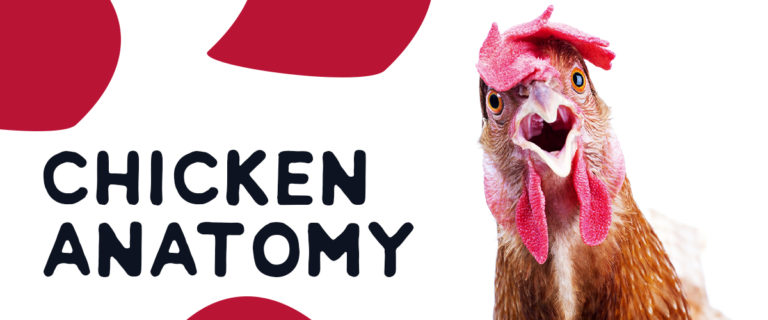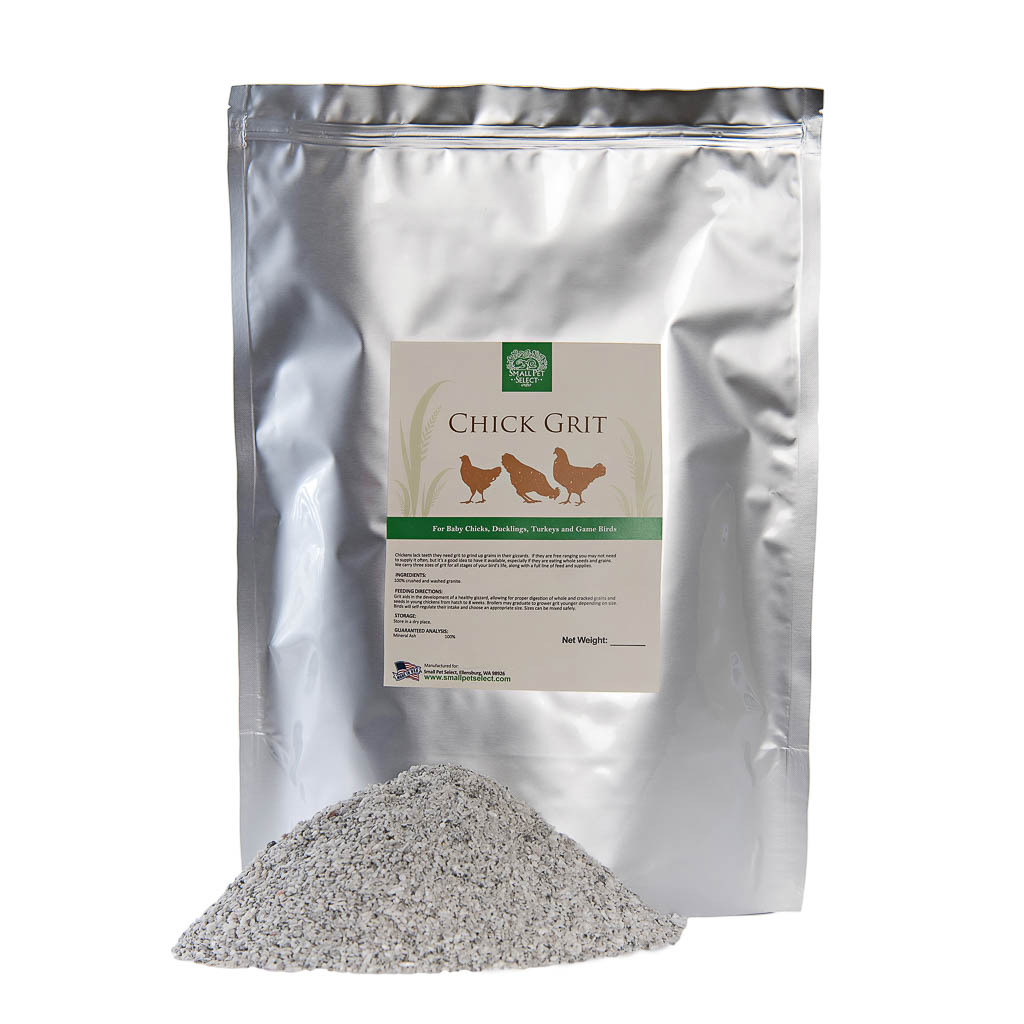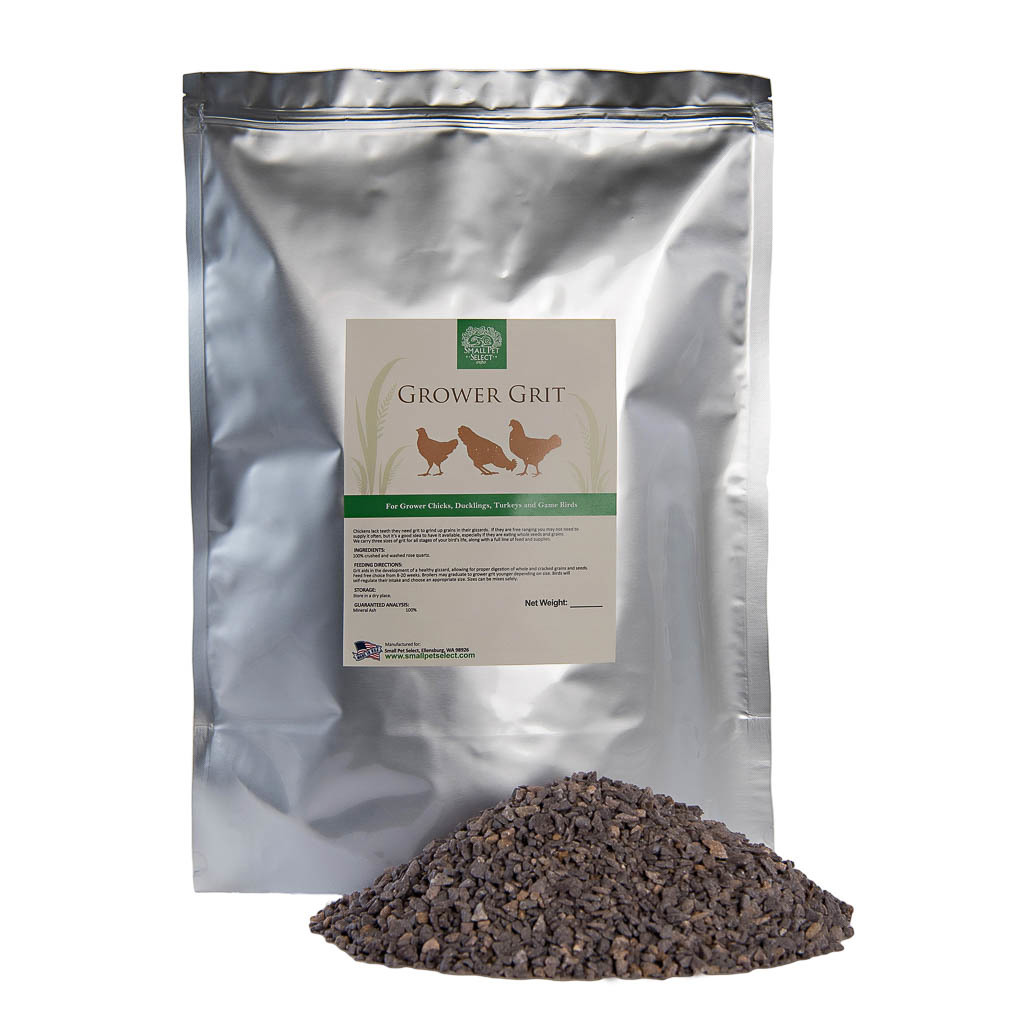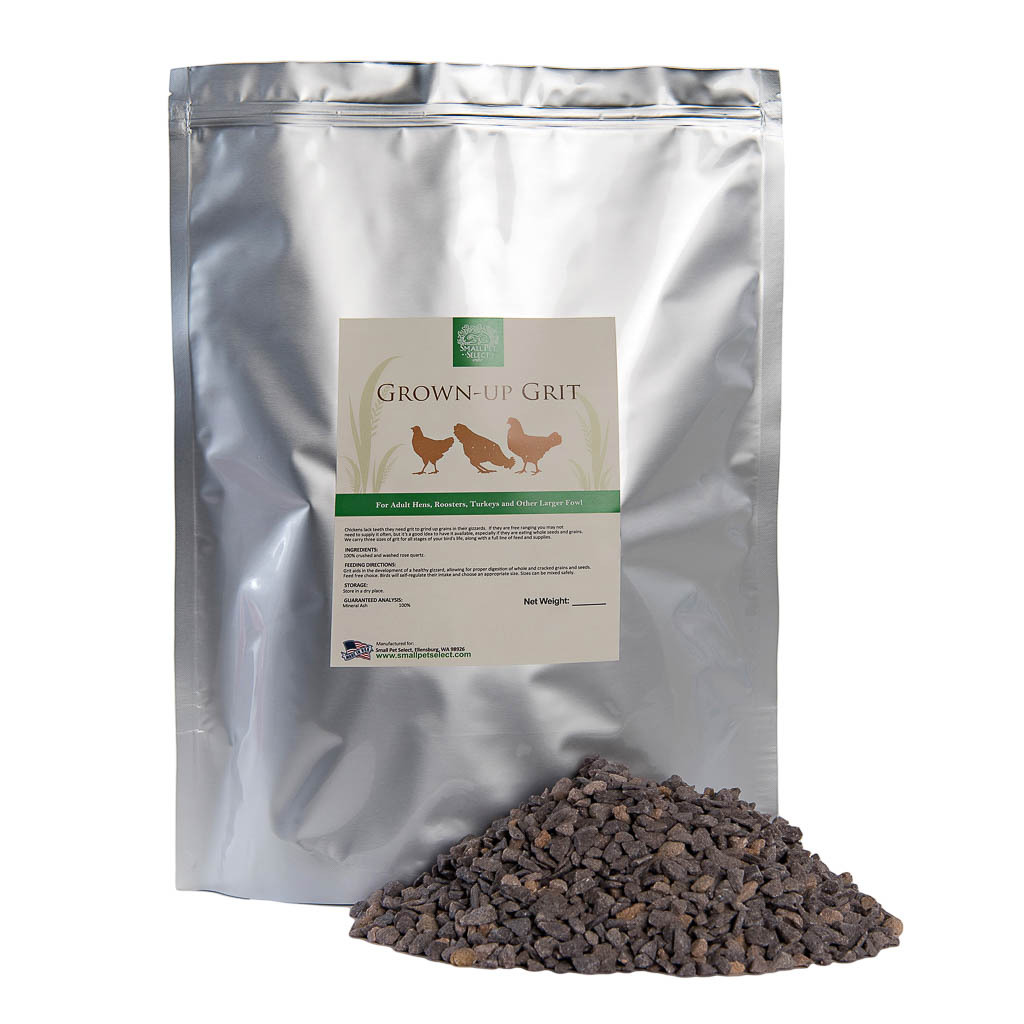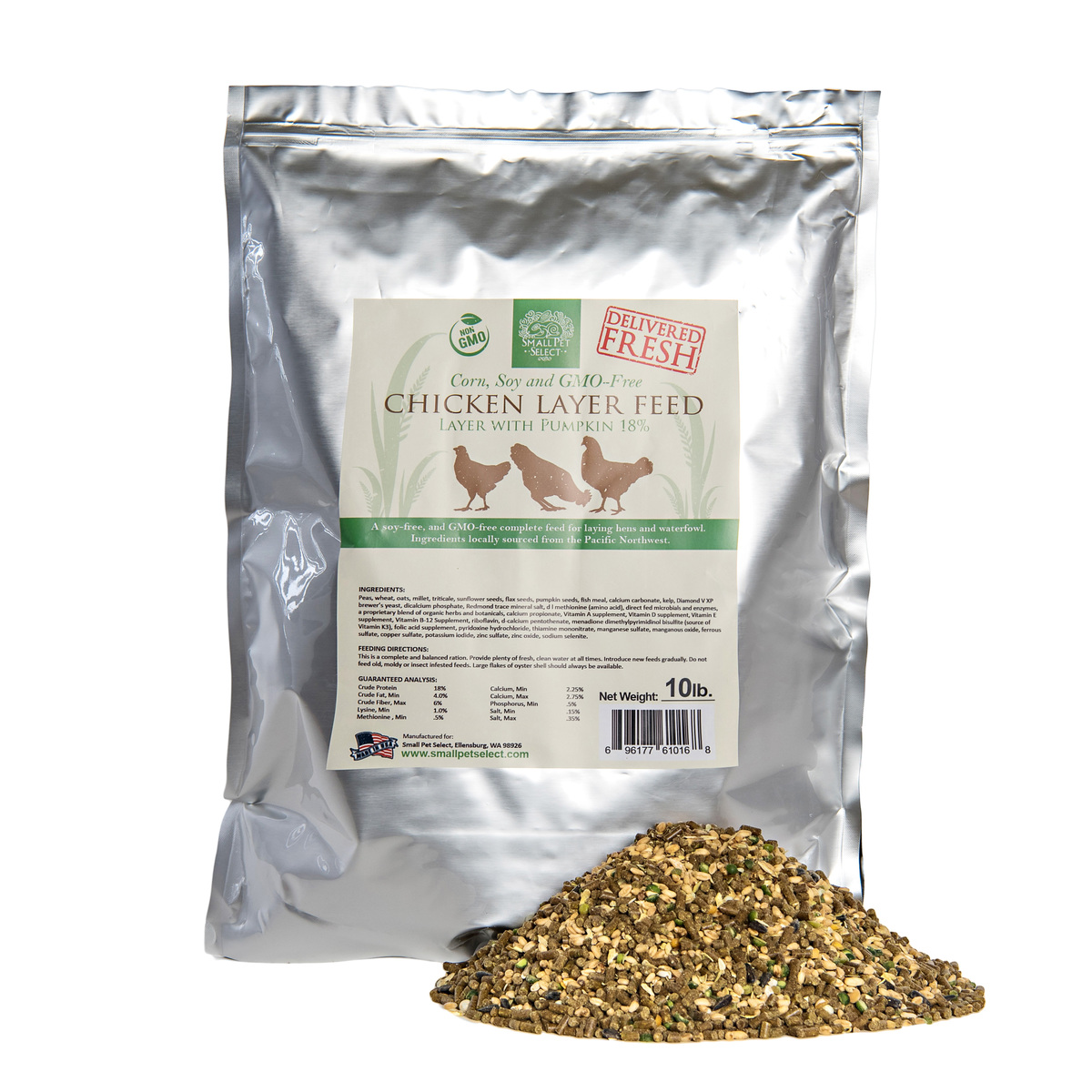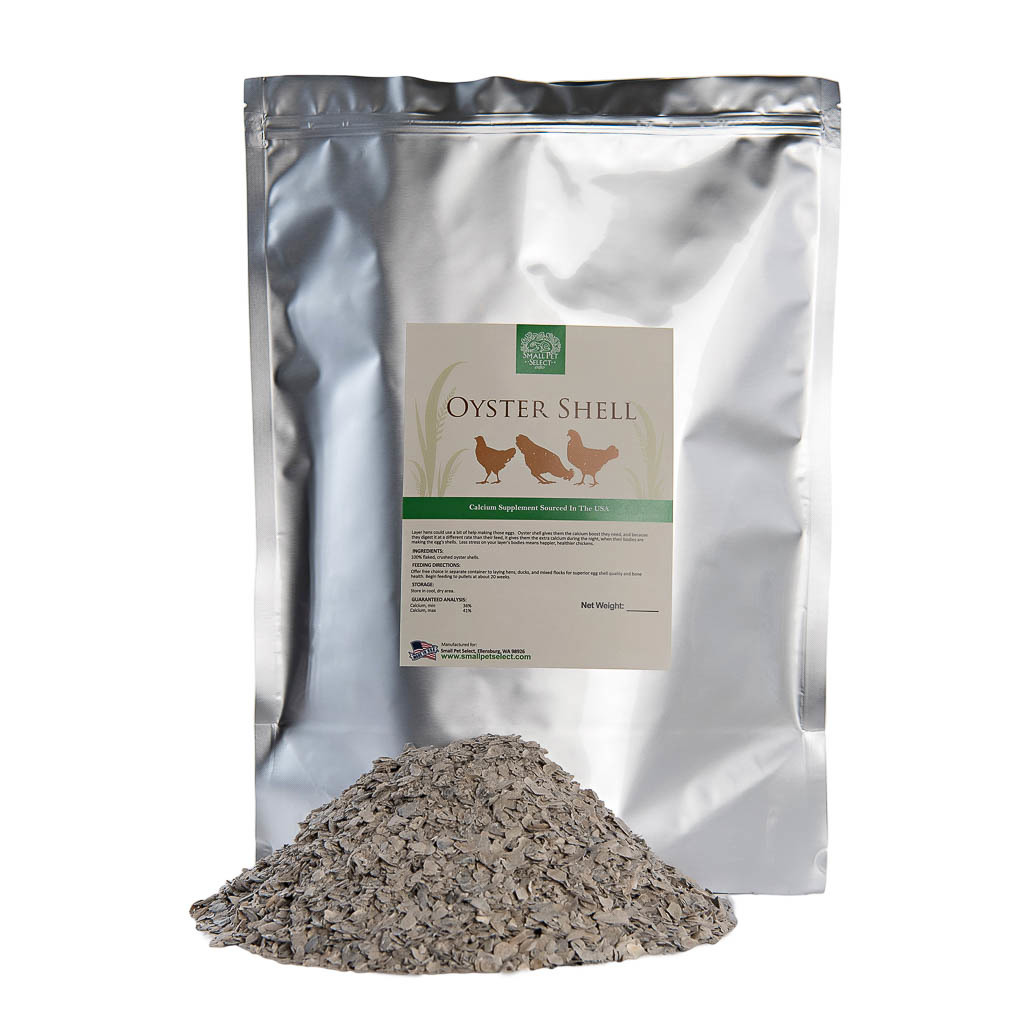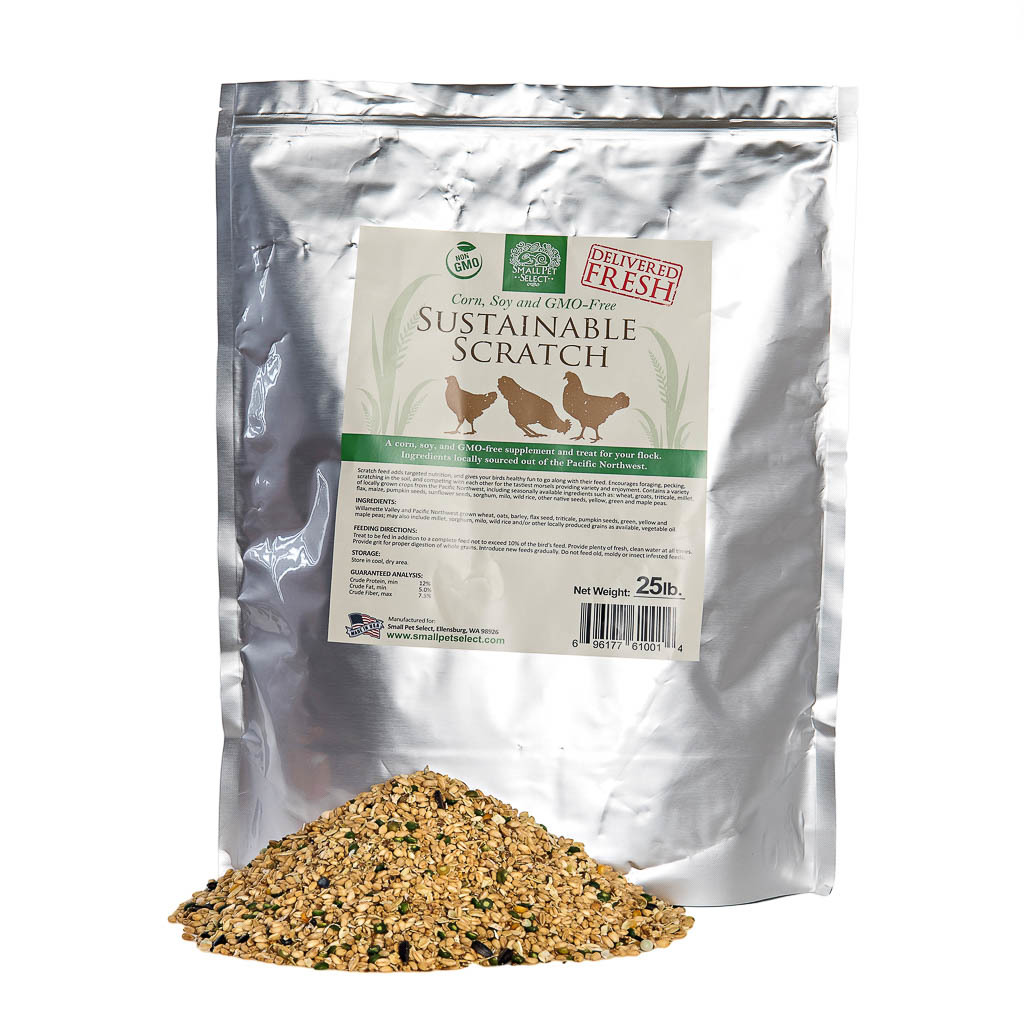Knee bone connected to the thigh bone, the thigh bone connected to the hip bone,
the hip bone connected to the back bone… Sorry. I got carried away. Anyway, chicken anatomy.
Chickens are built a bit different than dogs, cats, rabbits, or hoomans. I bet that doesn’t come as a big surprise. Like hoomans, Chickens are bipedal; they walk around on 2 legs. But that’s pretty much where the similarities between people and bird end. I’m getting ahead of myself; let’s start from the outside-in.
Feathers
Obviously, feathers set birds apart from other pets and hoomans. (Well, I did see some hoomans sporting feathers at Mardi Gras once… but that’s a whole other story.) Dogs, cats, rabbits, guinea pigs... they all have lush coats of soft fur. Hoomans have hair. Birds and other avians have feathers.
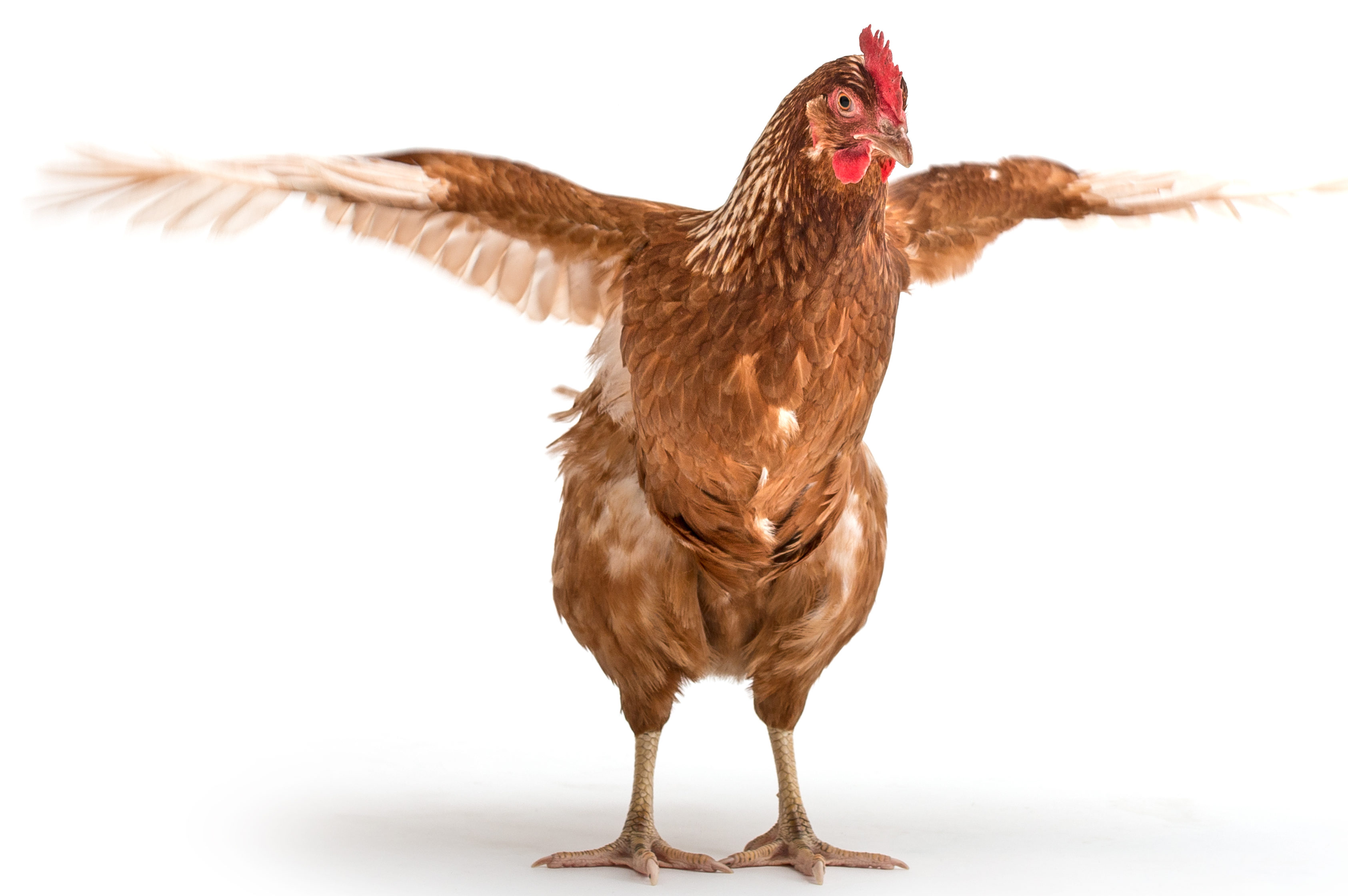
They all serve the same purpose: to keep their wearer warm and cozy (and stylish). Also, feathers give chickens another advantage - flight. Without feathers, chickens cannot fly. Ok, so maybe chickens in general aren’t the most graceful flyers, but these feathers give them enough lift to get out of harm’s way.
Skin
All living beings have skin. Some are slick and slimy, like frogs’ backs; some are tough and scaly, like chickens’ feet. They all are modified to perform specific functions. Slimy skin allows the animal to absorb air and moisture; scaly skin protects against the elements.
Chickens love to peck and scratch the ground so the skin on their feet and legs must be tough enough to withstand this habit. The skin under the feathers is more delicate to allow protective feathers to poke through distinct follicles.
Digestive System
Despite being relatives of the dinosaurs (theoretically), chickens do not have teeth. (I would certainly not appreciate this part of chicken anatomy... if I was one.) Thus, they cannot chew their food into neat little bits. Their digestive systems must accommodate; and that is where the crop comes into play.
Once a chicken has pecked their meal into a swallowable morsel, it travels into the crop - an expandable storage area. This area allows the bird, a prey creature, to store a lot of food in case they have to escape from danger in the middle of dinner. When the crop reaches max capacity, the food continues into the proventriculous where digestion starts taking place, then onto the gizzard.
Chickens require grit to properly digest their food. And they store these in the gizzard – a muscular portion of the digestive tract that helps grind food into a palatable paste. Finally, the food is passed through various sections of intestines where enzymes extract nutrients which are then absorbed. This whole process takes about 4 hours. Once all the good stuff is extracted, the remains are expelled through the cecae (ie: the, um, chicken butt). And then wonderful fertilizer is utilized (ie: the, um, chicken poop).
Check out our chicken grit below. 👇🏻
Bones
Bird bones are a huge part of chicken anatomy, it's no wonder because their bone density allows them to fly. (They're lightweight and fairly fragile.) They're mainly made up of calcium, phosphorus and collagen fibers. Bones provide structure and strength to the whole bird. Birds actually have two types of bones:
Pneumatic: Hollow bones connected to the respiratory system through air sacs. These bones include the skull, pelvis and collar bone.
Medullary: These are the calcium-rich bones that house bone marrow which makes blood cells… such as legs, shoulder blades and ribs.
A chicken spine contains a whopping 39 bones in total as opposed to a hooman’s measly 33. This gives our backyard feathered hunter the advantage of turning their head 180 degrees! #Whoa.
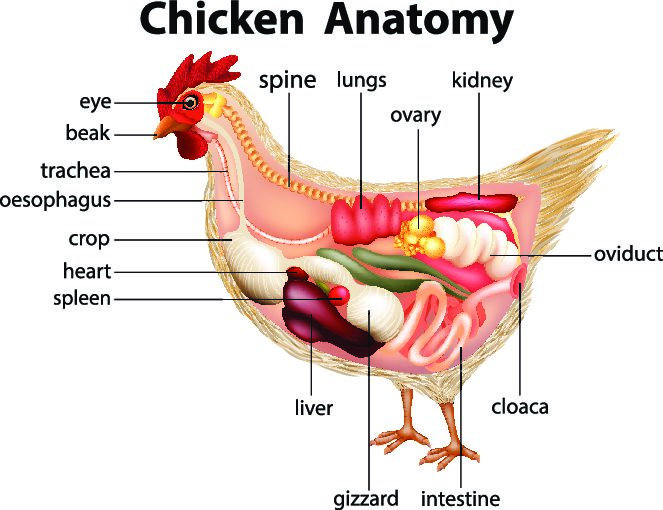
Reproductive System
Nothing is cuter than fluffy little peeping chicks. A hen can hatch as many as 12 fertilized eggs at a time. That’s a devoted mama.
We have covered how an egg is created before, but in a nutshell (eggshell?) here is how it works:
- The yolk is created inside the ovary of the hen, where it is then released into the oviduct.
- It is picked up by the infundibulum where fertilization takes place (if there is a rooster handy).
- The yolk continues its journey and gets covered in albumen (the white stuff).
- It then moseys on along to add layers of protective membranes until, finally…
- It ends up in the shell gland, where the developing egg spends most of its time calcifying until it is finally laid.
A hen can lay an egg every 24 hours but it takes a rooster to make that egg fertile. And only fertile eggs produce those adorably fluffy baby chicks.
Chicks stay warm and cozy in their eggs for about 21 days before they decide it’s time to meet the world.
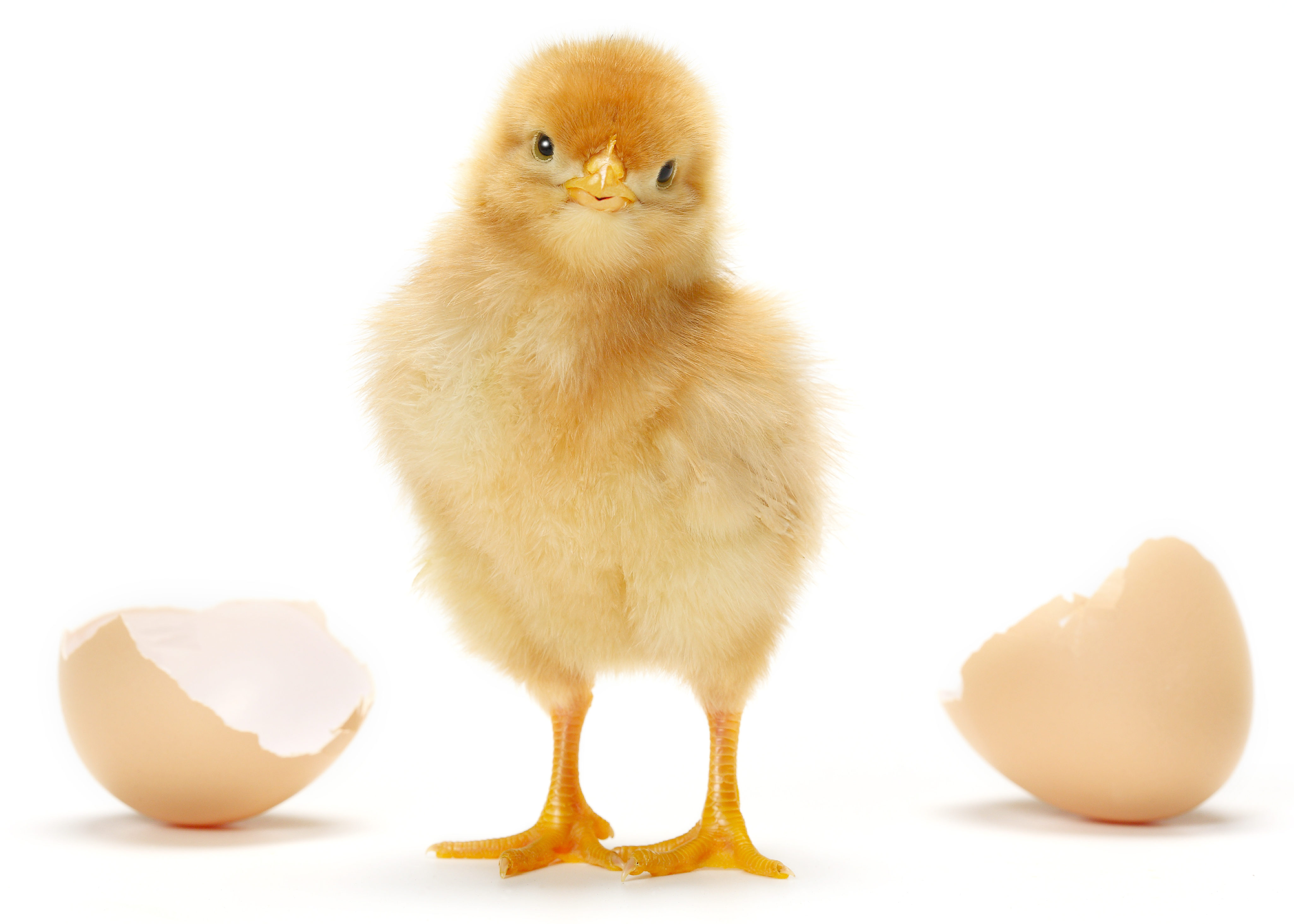
Chicken anatomy is pretty unique compared to bunnies, piggies and ‘chillas. Each and every beastie is built for requirements specific to their environment. Pretty amazing how we have all adapted to our individual needs. 





